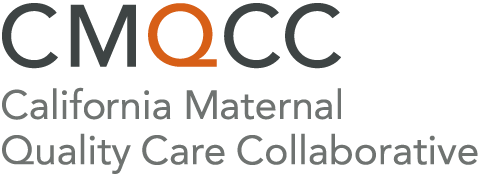Cardiovascular disease (CVD) is the leading cause of maternal mortality in the United States and California
- CVD accounts for >33% of all pregnancy-related deaths in the US and 25% of pregnancy-related deaths in CA (2002-2006)
-
Data from the California Pregnancy Associated Mortality Review (CA-PAMR) of deaths occurring from 2002-2006 show:
- Only a small fraction of these women/birthing people had a known diagnosis of CVD prior to death
- Most women/birthing people who died had presented with symptoms either during pregnancy or after childbirth
- A significantly higher proportion of women/birthing people sustain short- and long-term morbidity due to undiagnosed or delayed diagnosis of CVD, as evidenced by the fact that one of every three intensive care admissions in pregnancy and the postpartum period are related to CVD
- 25% of these deaths may have been prevented if CVD was diagnosed earlier
To address these issues, CMQCC and the California Department of Public Health-Maternal, Child and Adolescent Health Division published the Improving Health Care Response to Cardiovascular Disease in Pregnancy and Postpartum Toolkit in 2017.
The Toolkit was developed by the Cardiovascular Disease in Pregnancy and Postpartum Task Force as a resource for obstetrics, primary care and emergency medicine providers who interact with women/birthing people during prenatal care or the postpartum period. The toolkit includes an overview of clinical assessment and comprehensive management strategies for CVD based on risk factors and presenting symptoms.
Key elements include:
- An algorithm for symptomatic or high-risk pregnant or postpartum women/birthing people to guide stratification and initial work-up
- Clinician resources on contraception counseling, cardiovascular medications and breastfeeding
- Key points about racial and ethnic disparities among cardiovascular diagnoses
- Information and infographics geared directly for women/birthing people diagnosed with, or at risk of, CVD
- Future risk of CVD and long-term health issues
- Educational handouts for women on contraceptive options and planning a pregnancy with known CVD
Improving Health Care Response to Cardiovascular Disease in Pregnancy and Postpartum Toolkit
Download Improving Health Care Response to Cardiovascular Disease in Pregnancy and Postpartum Toolkit (2017)
- (Beginning 3/1/25) The toolkit is available to download after logging into CMQCC's website. If you do not already have a CMQCC Resources account, you will need to complete a brief survey to set one up.
- Teaching Slide Set for Professionals
- Webinar: Introducing the Cardiovascular Disease in Pregnancy Toolkit
Individual sections of the toolkit are also available to download:
- B-Type Natriuretic Peptide (BNP)
- Cardiovascular Disease Assessment in Pregnant and Postpartum Women
- Maternal Risks for Underlying Cardiovascular Disease: Key Consensus Tables
- Guide to Cardiovascular Disease Medications for Pregnant and Breastfeeding Women
- Guide to Contraception Information for Women with Cardiovascular Disease
- Resources When Caring for Women With Adult Congenital Heart Disease or Other Forms of Cardiovascular Disease
Key Cardiovascular Resources
Cardiovascular Disease Lifetime Risks Infographic
Infographic Goal: To make women and birthing people aware that having certain complications in pregnancy or postpartum (up to five months after having a baby) can increase the lifetime risk of cardiovascular disease. Women/birthing people can lower their risk by engaging in healthy activities and making sure to get regular check-ups with a healthcare provider who knows their history. This infographic (PDF format) is available in English and Spanish to download, share via social media, and reproduce to post in clinics and public spaces.
Cardiovascular Disease Signs & Symptoms Infographic
Infographic Goal: To make women and birthing people aware of the signs and symptoms of cardiovascular disease in pregnancy or postpartum, up to five months after having a baby. Cardiovascular disease is the leading cause of death among pregnant and postpartum women and birthing people. If extreme symptoms do not go away with over-the-counter or prescription medication, women and birthing people should see a healthcare provider. This infographic (PDF format) is available in English and Spanish to download, share via social media, and reproduce to post in clinics and public spaces.
- Cardiovascular Disease Signs and Symptoms Infographic, English
- Cardiovascular Disease Signs and Symptoms Infographic, Spanish
Funding Acknowledgement
Funding for Maternity Quality Infographics was provided by Federal Title V MCH block grant funding from the California Department of Public Health-Maternal Child and Adolescent Health Division and Stanford Medicine.
